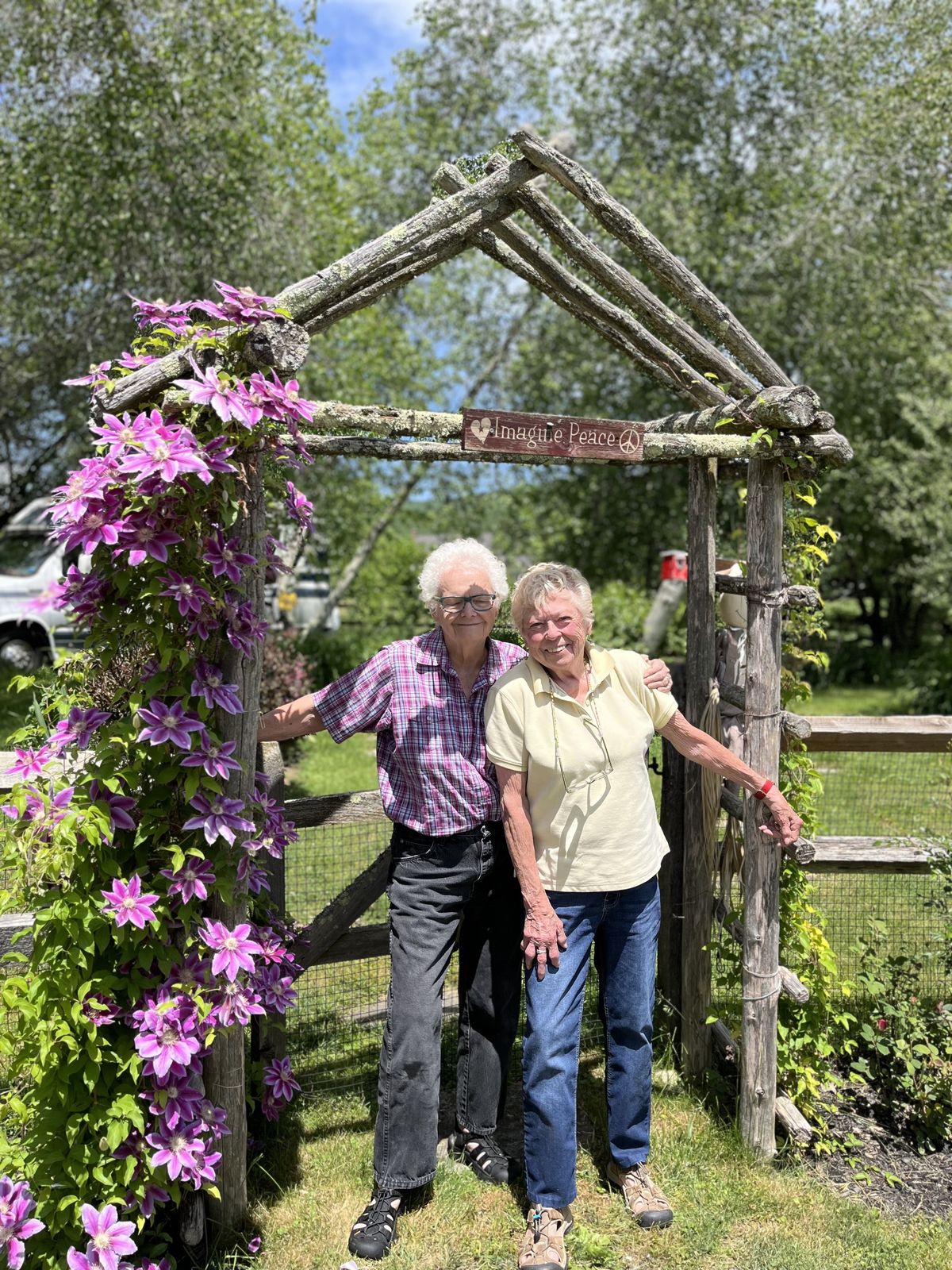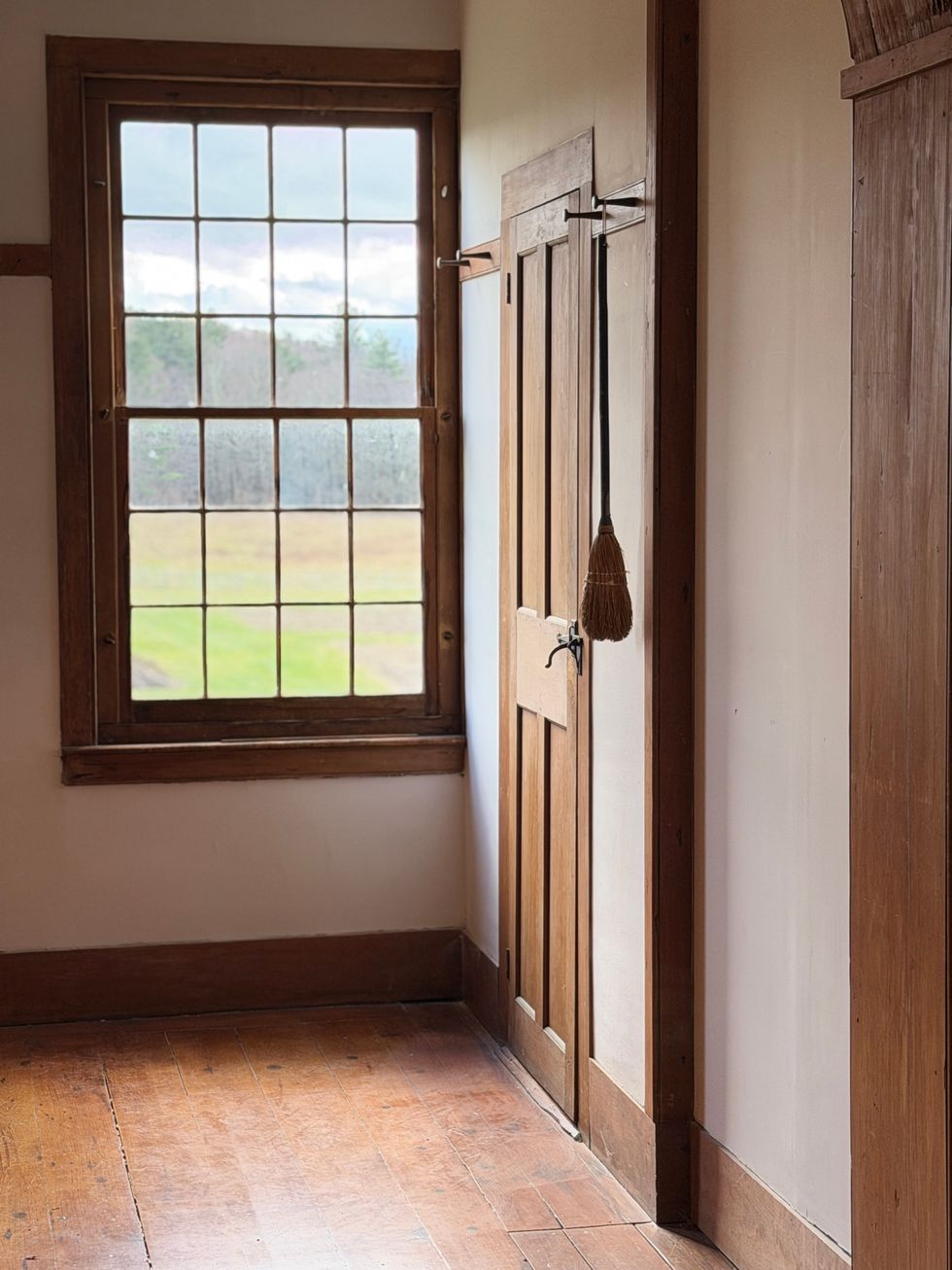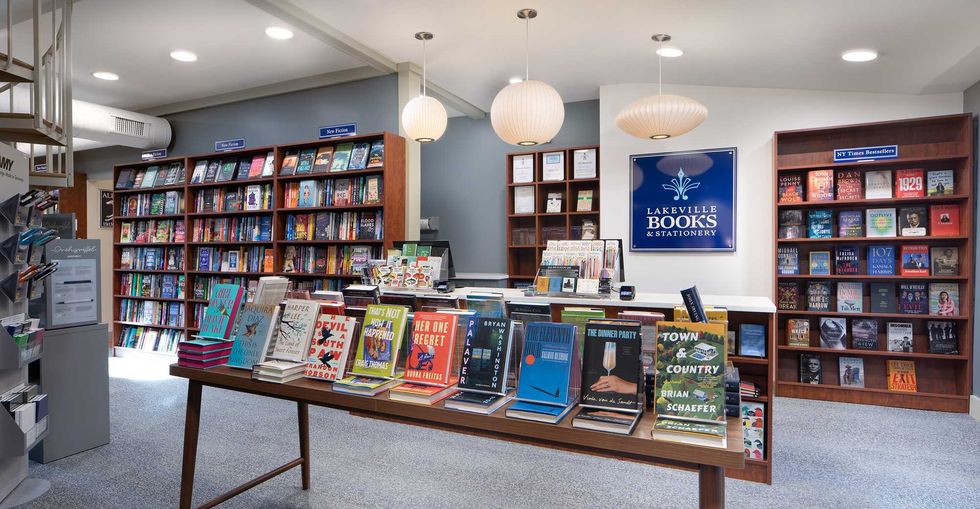A Millerton love story

Mary Howard and Louise R. Black at their home in Millerton.
Natalia Zukerman

Mary Howard and Louise R. Black at their home in Millerton.
As we celebrate Pride Month, the love story of Mary Howard and Louise R. Black stands as a testament to the power of love at any age. The couple found each other later in life through the unlikeliest of places: Match.com.
Louise R. Black was born in Astoria in 1939 and raised in Elmhurst, Queens. “It was a great place to grow up,” she recalled. “A lot of people from foreign countries. We just had so many friends from all over.” Mary Howard was born in Alexandria, Virginia in 1942 and spent her formative years in Endicott, NY. Her life has taken her through Washington, D.C., Eugene, OR, and Mount Vernon, NY, where she lived for 31 years and ultimately met Louise.
In 2002, they both joined Match.com, a platform that neither initially embraced with enthusiasm. “I met a lot of females that I just thought were not interesting at all,” said Louise. But upon reading each other’s profiles, something clicked. Mary shared, “I wrote an ad that said I don’t care whether they’re tall or short, fat or skinny. I’m looking for somebody who has some genuine interests of their own that they’re pursuing.” Louise added, “And I said pretty much the same thing.” Their connection was immediate, leading to a memorable first date at an Indian restaurant, an establishment they frequented during the years they lived together in Louise’s apartment in White Plains.
Before meeting Louise, Mary had been married to a man for 30 years. “And happily married,” she added, noting that she had always harbored feelings for women. “I had had feelings for women from a very young age,” Mary explained, “and the marriage was, frankly, over and done with.” Mary and her ex-husband, whom she met as a doctoral student at the University of Oregon, had a daughter together and are still very good friends. Their daughter, who lives in Brooklyn, married a woman and Robert, her ex, conducted the ceremony.
Of her daughter’s sexuality, Mary shared, “My husband and I both just understood that that’s what was happening from a fairly young age for my daughter. She never, you know, made a declaration about it. That’s how it was. It all seemed very natural.” She added, “And the gal that she’s married to now is really very delightful.”
“I love her ex-husband,” Louise added. “We all get along so fabulously well.”
Mary and Louise’s affinity for the Hudson Valley runs deep. Mary, who spent 30 years as a sociology professor at Brooklyn College, conducted extensive research in the area. “The Hudson Valley was kind of the cradle of civilization in many ways,” she noted. Louise’s family owns an island above Saratoga Springs in Fort Edward and the family would spend time up there in the summers when she was little. “It’s 7 1/2 acres and it has a house on it and now my nephew lives across the river.” The couple still go visit from time to time even though the nephew has really “made it his man cave,” laughed Louise. Though she spoke of the house fondly, her memory is scarred by the significant environmental degradation from GE’s pollution. Beginning in 1947 and continuing until 1977, GE intentionally dumped approximately 1.3 million pounds of highly toxic polychlorinated biphenyls (PCBs) into the Hudson River from Fort Edwards and the neighboring plant in Hudson Falls (now closed). GE also polluted the soil and groundwater under its plants and in the surrounding communities. Louise recalled, “I was about 7 or 8 years old, and I walked out the door of the old house and the river was pink. I screamed for my father, and he explained that it was pink because ‘those are all dead fish belly up.’” GE didn’t close the plant for several years and Louise experienced the “pink” water phenomenon several more times. “It was really sad because we swam in the river, we’d bathe in the river, wash our hair in the river. It was all so wonderful.”
This impactful experience has led Louise to be particularly mindful of the environment as she tends to the gardens at their home in Millerton. The couple have planted numerous trees, native plants, and butterfly bushes and would never dream of using pesticides. About their move from White Plains, Louise shared, “I had always been in apartments, and I decided I wanted to live in a house. So, we came up and we had a lot of fun riding around up here.” The couple knew they wanted to be near the river but weren’t yet set on a town. Every time they came up to look at properties, however, they ended up at Irving Farm in Millerton to regroup.
“We’d have coffee, and we’d cross things off our list,” Mary said.
Louise added, “I finally said to Mary, ‘You know, we keep coming back to this town every time, maybe we should go look at that house again.’” The couple purchased their house in Millerton in 2007.
Their life in Millerton is full of creativity and community. Louise paints, while Mary crafts handmade birdhouses. In her professional life, Louise was a gym teacher and athletic director at Scarsdale High. “I was the first woman straight out of college that they ever hired,” she shared. But her passions have always extended beyond sports to painting, dancing, singing, and acting. The couple now participate in local art shows and open studios and take care of the upkeep of their home themselves. “This horseshoe neighborhood is just incredible,” said Louise, describing the welcoming community they’ve found on their street and in the village. As of now, their plan is to stay in their house and if need be, hire caregivers to come in and help. “Right now, we still do all the work out here with a young man who comes every Thursday. He does the stuff that’s impossible,” said Louise. “He spends four hours and he’s tall,” Mary laughed.
The couple had a commitment ceremony in Provincetown, Massachusetts in 2009 but they haven’t legally married. Louise shared, “I would like to have done that because I haven’t been married, but Mary wasn’t for it.”
“As a sociologist, I know that signing all those legal papers has an effect on people,” Mary laughed. “Things are not the same after and if you are like we are, you know, we’re reasonable, we discuss with each other what we want or don’t want and that kind of stuff. And then there’s no need, it seems to me.”
The couple have joint and separate accounts and a will delineating the legal rights for their shared property. Said Louise, “We are in a situation where we can provide adequately for ourselves, and we don’t require assistance.”
Independence has always been important to both Mary and Louise but as they age, they find they need one another in new ways that deepens their bond. For years, people have called them “The Divas” including their friend, the singer, Suede. “She called us that first,” said Louise. “We have it on our license plate! And then we also have…” Louise paused and turned to Mary for help remembering. “What do we have on our other license plate?”
“MaLou,” said Mary with a smile. “You know. Mary and Louise.”
Sharon Center School
SHARON — A Sharon Center School staff member discovered a “facsimile firearm” behind a file cabinet around 2 p.m. Wednesday, Dec. 10, prompting an immediate response from State Police and a same-day notification to parents, according to police officials and an email obtained by The Lakeville Journal.
Melony Brady-Shanley, the Region One Superintendent, wrote in the email that, upon the item’s discovery, “The State Police were immediately notified and responded to the building.”
A canine team was brought in to sweep the building to confirm no additional items were present, “and the building has been fully cleared. The State Police consider this an isolated incident and not criminal in nature,” Brady-Shanley wrote.
State Police explained, “Troopers from Troop B - North Canaan were dispatched to the Sharon Center School for reports of a firearm located in a closet. The firearm was determined to be a non-firing, replica firearm... There was no threat to the school or the public.”
Brady-Shanley emphasized in the e-mail that “the safety and well-being of our students and staff remain our highest priority at all times. We will continue to follow and strengthen our safety protocols to ensure that our schools remain secure, supportive environments for learning.”
The Stone Round Barn at Hancock Shaker Village.
My husband Tom, our friend Jim Jasper and I spent the day at Hancock Shaker Village in Pittsfield, Massachusetts. A cold, blustery wind shook the limbs of an ancient apple tree still clinging to golden fruit. Spitting sleet drove us inside for warmth, and the lusty smells of manure from the goats, sheep, pigs and chickens in the Stone Round Barn filled our senses. We traveled back in time down sparse hallways lined with endless peg racks. The winter light was slightly crooked through the panes of old glass. The quiet life of the Shakers is preserved simply.

Originally founded in England, the Shakers brought their communal religious society to the New World 250 years ago. They sought the perfection of heaven on earth through their values of equality and pacifism. They followed strict protocols of behavior and belief. They were celibate and never married, yet they loved singing and ecstatic dancing, or “shaking,” and often adopted orphans. To achieve their millennialist goal of transcendental rapture, we learned, even their bedclothes had to conform: One must sleep in a bed painted deep green with blue and white coverings.
Shakers believed in gender and racial equality and anointed their visionary founding leader, Mother Ann Lee, an illiterate yet wise woman, as the Second Coming. They embraced sustainability and created practical designs of great utility and beauty, such as the mail-order seed packet, the wood stove, the circular saw, the metal pen, the flat broom and wooden clothespins.
Burning coal smelled acrid as the blacksmith fired up his stove to heat the metal rod he was transforming into a hook. Hammer on anvil is an ancient sound. My husband has blacksmithing skills and once made the strap hinges and thumb latches for a friend’s home.
Shaker chairs and rockers are still made today in the woodworker’s shop. They are well made and functional, with woven cloth or rush seats. In the communal living space, or Brick Dwelling, chairs hang from the Shaker pegs that run the length of the hallways, which once housed more than 100 Shakers.

In 1826, the 95-foot Round Stone Barn was built of limestone quarried from the land of the 3,000-acre Hancock Shaker Village. Its unique design allowed a continuous workflow. Fifty cows could stand in a circle facing one another and be fed more easily. Manure could be shoveled into a pit below and removed by wagon and there was more light and better ventilation.
Shakers called us the “people of the world” and referred to their farm as the City of Peace. We take lessons away with us, yearning somehow for their simplicity and close relationship to nature. One Shaker said, “There’s as much reverence in pulling an onion as there is in singing hallelujah.”
A sense of calm came over me as I looked across the fields to the hills in the distance. A woman like me once stood between these long rows of herbs — summer savory, sage, sweet marjoram and thyme — leaned on her shovel brushing her hair back from her eyes, watching gray snow clouds roll down the Berkshires.
More information at hancockshakervillage.org

Exterior of Lakeville Books & Stationery in Great Barrington.
Fresh off the successful opening of Lakeville Books & Stationery in April 2025, Lakeville residents Darryl and Anne Peck have expanded their business by opening their second store in the former Bookloft space at 63 State St. (Route 7) in Great Barrington.
“We have been part of the community since 1990,” said Darryl Peck. “The addition of Great Barrington, a town I have been visiting since I was a kid, is special. And obviously we are thrilled to ensure that Great Barrington once again has a new bookstore.”
The second Lakeville Books & Stationery is slightly larger than the first store. It offers more than 10,000 books and follows the same model: a general-interest store with a curated mix of current bestsellers, children’s and young readers’ sections; and robust collections for adults ranging from arts and architecture, cooking and gardening, and home design to literature and memoirs. Anne reads more than 150 new titles every year (as many as a Booker Prize judge) and is a great resource to help customers find the perfect pick.
A real-time inventory system helps the store track what’s on hand, and staff can order items that aren’t currently available. There is also a selection of writing and paper goods, including notecards, journals, pens and notebooks, as well as art supplies, board games, jigsaw puzzles and more. The owners scour the stationery trade shows twice a year and, Darryl says, “like to tailor what we offer to suit the interest of our customers in each market.”
The Pecks know what it takes to run a successful local enterprise. Darryl has a 53-year background in retail and has launched several successful businesses. He and Anne owned and operated a bookstore on St. Simons Island, Georgia, from 2019 to 2025. They are tapping into their local roots with both stores. They raised their family in Sharon, and their daughter Alice, a native of the Northwest Corner, manages the Lakeville store.

The family values the role that a retail store plays as a supporting partner in the community, and they prioritize great management in both locations, hiring and training talent from local communities. Their 10 team members across both stores are from the area, and two of the Great Barrington employees previously worked at Bookloft.
Darryl and Anne’s attention to customer service is everywhere apparent and adds to the enjoyable and irreplaceable in-store shopping experience. The books are in pristine condition, eliminating the risk of damage that sometimes occurs during shipping. This is especially important for books that will live on people’s shelves and coffee tables for years.
Darryl says, “People love the in-store discovery — you find books you didn’t know existed, which is very difficult to do on a website. Also, many customers depend on our recommendations when visiting. There is a saying about bookstores versus online ordering: We may not have exactly what you were looking for, but we have what you want.”
Lakeville Books & Stationery’s Great Barrington store is open 7 days a week, Monday-Saturday, 10 a.m. to 6 p.m., and Sunday, 11 a.m. to 5 p.m. Parking is available in the lot behind the building and in the parking lot behind the firehouse. The entrance to the store is accessible from the store parking lot.
For more information, go to lakevillebooks.com., and sign-up for the Lakeville Books newsletter.
Richard Feiner and Annette Stover have worked and taught in the arts, communications, and philanthropy in Berlin, Paris, Tokyo and New York. Passionate supporters of the arts, they live in Salisbury and Greenwich Village.